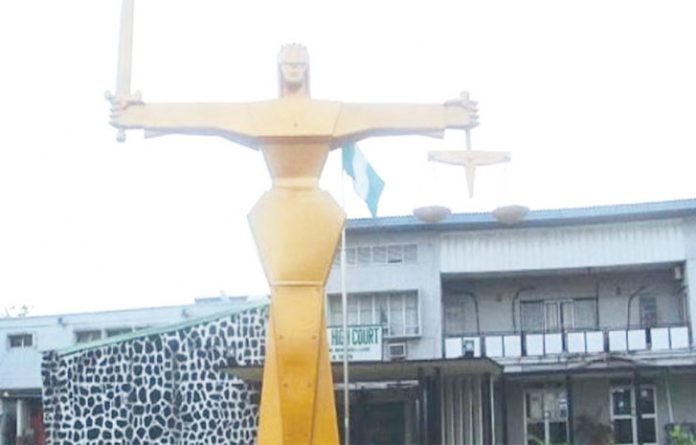Justice Goodluck Olasambo of High Court of the Federal Capital Territory, on Friday declared that Interland Resources Nig Ltd, as the rightful owner and beneficial holder of the interest subsisting in the Certificate of Occupancy in respect of Plot No. 802, located in cadastral Zone 803 within Wuye District, FCT Abuja together with its perimeter fence, appurtenances, rights of way and easement thereto attached.
Justice Olasambo made the declaration in a judgment on a suit filed by Interland on April 2, 2012, challenging the wrongful revocation of its plot of land.
The first defendant in the suit marked FCT/HC/CV/2939/2012 is the FCT Minister, while the Federal Capital Development Authority (FCDA) and Ajama Ventures Ltd are 2nd and 3rd defendants respectively.
Barrister Ademola Adewoye filed and argued the matter on behalf of the plaintiff.
Justice Olasambo also declared that the action of the defendants, their agents, whatever names so-called to lay fresh demarcation beacons on the said plot with intent to appropriate, balkanize and re-allocate the said plot No. 802, or any of its part thereof to 3rd Defendant or to another person constitutes a trespass, same being unlawful unwarranted.
The court ordered the defendants, their agents or officers to remove the new demarcating beacons they placed on the plot or any of its part thereof to the 3rd defendant or to another person.
In addition, the court declared that the 1st and 2nd defendants have waived their right to contend that the plaintiff is not the title holder of the land, by reason of various correspondences between the parties.

In this regard, Justice Olasambo ordered the 1st and 2nd defendants to accept and register the Power of Attorney in favour of the plaintiff.
Consequently, the court awarded the sum of N7.5million as general damages and trespass against the defendants, in favour of the plaintiff.
Before granting all the reliefs of the plaintiff, Justice Olasambo stated that the plaintiff duly tendered in a piece of evidence (exhibit PW1D), a Certificate of Occupancy, issued to him on December 19, 2004.
Going by section 83(3) of the Evidence Act, the court held that it was bound to reject documents of the 1st and 2nd defendants earlier admitted in evidence showing that the certificate of occupancy was forged and faked.
Justice Olasambo found out that the documents were authored by the 1st and 2nd defendants, who are interested parties, years after the legal action was instituted in April 2012.
“Both exhibits DW1A, DW1A -3 (documents) tendered by the 1st and 2nd defendants are caught up by section 83(3) of Evidence Act, and therefore ought not to be admitted. Consequently, the exhibits are hereby discountenanced by the court for being admitted in error, Justice Olasambo held.
The court held that revocation of a plot must be issued in strict compliance with the provisions of the Land Use Act.
“Plaintiff right of occupancy as stated in the Land Use Act remains unfettered and subsists.
“The 1st and 2nd defendants have failed to impune the validity of their documents, their assertion that the certificate of occupancy was wrongly and mistakenly issued to the plaintiff is unreliable and not credible.
“The certificate of occupancy therefore remains valid and subsisting. I hold that the plaintiff has established superior interest in the plot of land having exhibited a valid Cof O. The plaintiff has a better title to the said plot 802, the court held.
On the allegation that the certificate of occupancy was forged, the court noted that the report of the ministerial committee which probed the incident as presented by DW1 was “Hearsay evidence” as the witness did not show he was a member of the committee.
“The allegation of forgery has not been effectively proven against the plaintiff by the defendants. All particulars of facts upon which “allegation of mistake” were not pleaded by the defendants, Justice Olasambo held.
Source: Independentng




